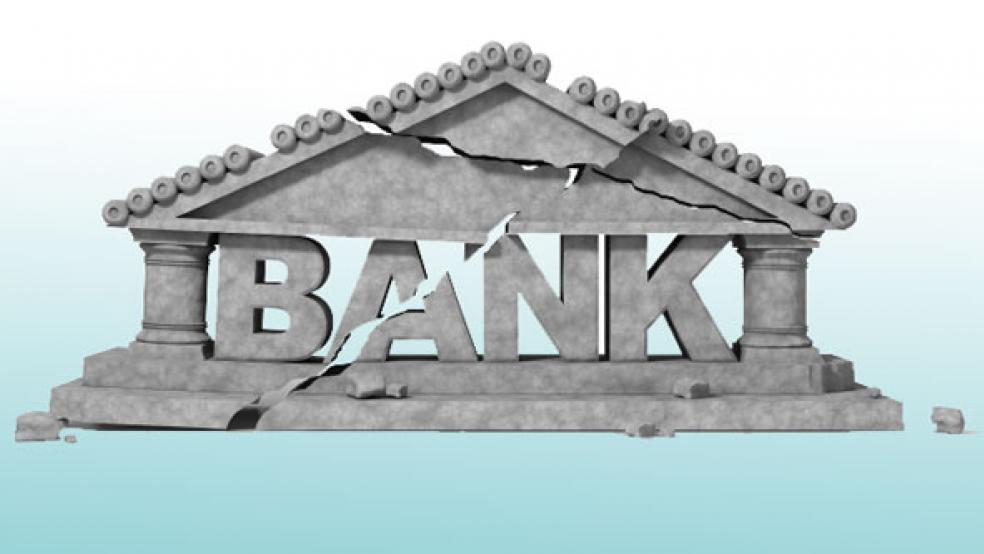Just how big are the largest banks in the U.S.? Here’s a little perspective:
In the past few months, JPMorgan Chase has agreed to pay, depending on how you do the math, somewhere between $22 billion and $25 billion in fines and penalties for various illegal activities, from hiding its suspicions about Ponzi schemer Bernie Madoff to misleading investors about the notorious London Whale.
Meanwhile, as of the third quarter of 2013, 99.1 percent of banks chartered in the U.S. had less than $20 billion in total assets on their books.
Related: Why Jack Lew Is Kidding Himself About “Too Big To Fail”
Think about that for a moment. In the space of less than 90 days, JPMorgan Chase has agreed to fines greater than the total value of all the assets held by almost every bank in the country. And not only is it still in business, it’s generating revenues roughly equal to all those fines every quarter. And its stock price is soaring. The bank’s share price rose again yesterday despite The Wall Street Journal’s revelation of yet more potential illegal activity – JPM is one of several banks being investigated for deliberately mispricing volatile residential mortgage-backed securities during the financial crisis.
The point here is not to pick on JPMorgan alone. The very largest banks in the U.S. are posting almost uniformly spectacular financial results that have seemingly inured them to the regulatory and legal penalties they are made to pay.
A hearing held Wednesday by the Senate Committee on Banking, Housing and Urban Development addressed one of the reasons why the banks are doing so well even as they face continued legal actions: They enjoy a massive subsidy rooted in the market’s belief that, should they ever get in trouble, the government will bail them out. That enables those banks to borrow more cheaply than their smaller competitors and leads shareholders to believe that they are protected from downside risk should the bank get in trouble.
Related: 5 Years After the Crisis – What Banks Haven’t Learned
In the hearing Wednesday, Lawrance L. Evans, Jr., Director of Financial Markets and Community Investment for the Government Accountability Office, testified that during the financial crisis, the more than $1 trillion in support given to the financial markets by the federal government went largely to the biggest banks.
Evans said that a follow-up report, due out sometime this year, will quantify the financial benefits that large banks receive as a result of the public’s expectation that the government will not allow them to fail.
Advocates of breaking up the biggest banks said that they hope the GAO’s findings will convince the public of their case.
Professor Cornelius Hurley, who directs the Boston University Center for Finance, Law & Policy, said that he expects public support for shrinking the biggest banks to coalesce “once the public realizes that bailouts are not just something that happened in 2008 but something that’s going on today.”
Related: Banks – Give Us Your Money and We’ll Charge You for It
Big banks, he said, “are using the full faith and credit of the United States as a lever to get a better rate for themselves in the market. The big banks have free insurance they don’t pay a premium for.”
During the hearing, Senator Elizabeth Warren (D-MA) was one of a number of lawmakers who raised the question of whether the largest financial institutions should be forced to downsize.
“The four largest banks are nearly 40 percent bigger today than they were just five years ago. The six largest banks now control two thirds of the banking assets in this country, a 37 percent increase over where they were just in the last five years,” Warren said. “These banks, in other words, are a whole lot bigger now than they were when we bailed them out in 2008 because they were too big too fail.”
Warren has introduced legislation that would effectively break up the biggest banks by separating the traditional business of deposit-taking and lending from more risky activities in the securities markets, a position that was supported by witnesses at Wednesday’s hearing.
Related: JPMorgan Deal Won’t Close the Books on Mortgage Fraud
In his testimony, Simon Johnson, Ronald Kurtz Professor of Entrepreneurship at MIT Sloan School of Management pointed out that even the Federal Reserve Board has begun to consider limiting the size of the largest banks, citing Governor Daniel K. Tarullo’s suggestion that bank size might be limited to a specific percentage of the gross domestic product.
“The implication is that we should not allow the size of our largest bank holding companies to increase further,” Johnson said. But under questioning from Sen. Warren, Johnson went further, saying, “The Federal Reserve should take remedial actions…including breaking up the banks” along the lines of Warren’s legislative proposal.
Follow Rob Garver on Twitter: @rrgarver
Top Reads from The Fiscal Times:





